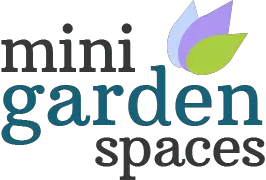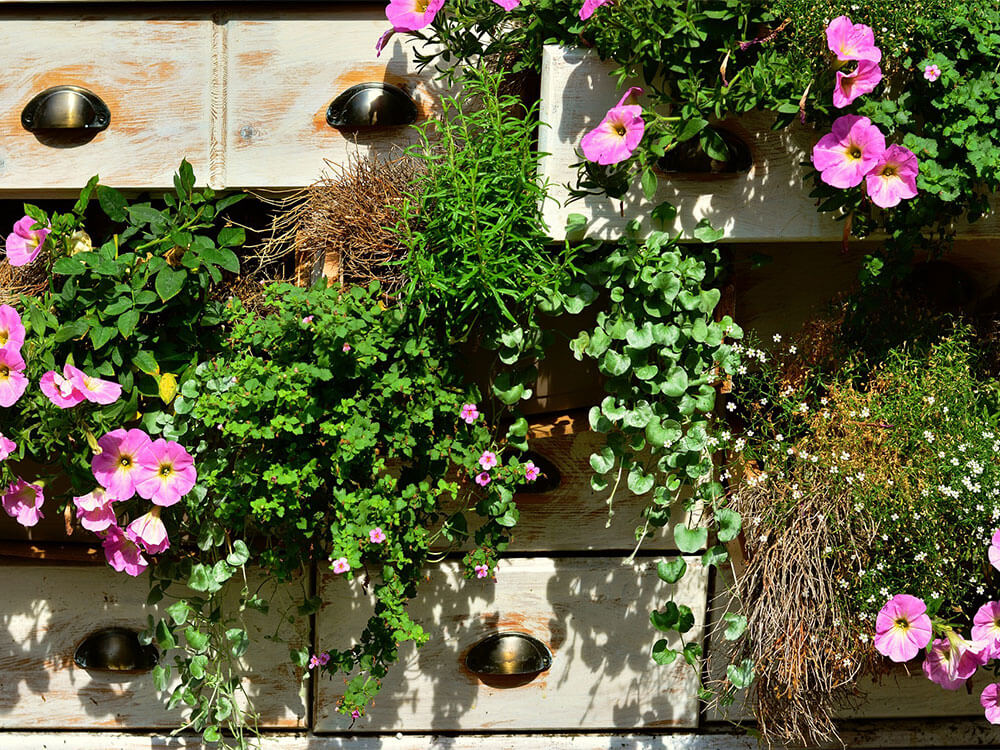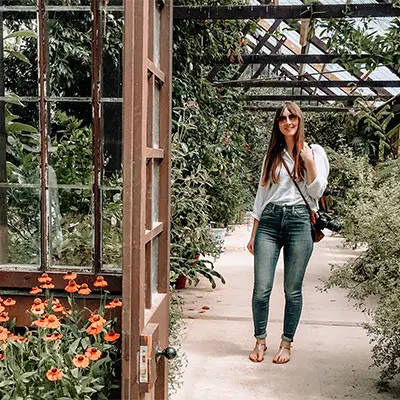11 Space Saving Tips for Mini Garden Spaces
March, 2023 |In small garden spaces, we can often feel limited in how much we can grow. Lots of shrubs can quickly take up space without providing much variety or interest. And vegetables with long vines and large leaves (like melons or pumpkins) can easily take up over 6ft of space each.
So whether you want to grow your own vegetables, harvest fruit from your own mini orchard, plant a tropical oasis, try growing ancient grains or do them all! Find our top space-saving tips that we’ve gathered over years of growing crops and plants in a small garden.
Space Saving Tips for Mini Garden Spaces
Terrace, patio, balcony, or mini rooftop garden. No matter how small your garden is, read on to find tips on how to maximize every last inch of space.
1. Grow vertical veg
Instead of allowing pumpkin or melon plants to trail along the floor, grow them vertically! From mini pumpkins and melons to squash and cucumbers.
Growing fruits and vegetables vertically is a great way to grow more veg in a small garden and save precious space. It’s also a great way to maximize your harvest yields too, especially growing high yield plants like tomatoes or pole beans!
Check out our guide to creating a vertical vegetable garden for tips and ideas. From DIY supports to which vertical crops to include.

2. Use vertical planters
Instead of planting flowers or shrubs in containers side by side, make the most of vertical space with vertical planters or shelves.
You can find amazing vertical planters online. From stepped wooden ladder planters, to vertically stacked strawberry pots. But you should also be able to find some at local garden nurseries too.
You could even DIY your own vertical planter using old pallet wood and some basic carpentry skills. If you’re not too sure about measurements, you can buy cheap DIY vertical planter pdf plans on Etsy.
Another benefit to using vertical planters and containers is that they can go with you if or when you move house!

3. Hanging baskets and pots
Hanging baskets are perfect for adding vertical interest in smaller gardens. Trailing flowers and plants can add beautiful texture and color while leaving ground space free for more plants!
Some great trailing plants to include could be ivy, lobelia, fuchsia, creeping Jenny, and even strawberries. You could even fill a hanging basket with trailing tomato plants for easy picking.

4. Choose dwarfing plant and tree varieties
When space is really tight, some shrubs may be too large or fast-growing to include. Luckily there are some amazing dwarf varieties of plants to choose from! From dwarf conifers to dwarf tomatoes… and even micro tomatoes.
Dwarf shrubs and flowers
From dwarf rhododendrons to dwarf sunflowers, these shorter, more compact plants allow you to enjoy the scent, shape, or color of usually larger plants in a mini version!
Plus, some shrubs, like these mini dwarf conifer varieties, are particularly slow growing, which means you don’t have to worry about regular pruning.
Top tip: Keeping perennial plants, like dwarf conifers, in containers is a great way to naturally contain their size.
Dwarf vegetable varieties
You can now find lots of tasty dwarf vegetable varieties to grow too, including dwarf pea varieties and small bush bean varieties. There are even some fantastic dwarf fruit tree varieties you could add too. From the mini ‘Necta Zee’ nectarine tree to the dwarf Meyer lemon!

5. Grow columnar fruit trees
If space is really right, look for columnar fruit trees instead. These fruit trees have been specially trained to grow in a column shape. The central trunk produces tiny lateral shots which are pruned back in a way that still allows them to produce fruit.
They can produce an amazing crop of fruit in as little as one square foot! This means you can have your own mini orchard on a balcony or tiny garden terrace.
You might like | How to Grow Apple Trees in a Small Garden
6. Stackable and collapsible furniture
If you’re looking to add chairs, loungers, or a table to your garden space, look for stackable or foldable options.
Being able to fold or stack garden furniture gives you much more flexibility. Whether you need to store them in winter or make space for children or dogs to play.

7. Climbing plants
When ground space is limited, introduce some climbing plants! There is an amazing variety of climbing plants that will vine along a trellis or support.
From passionflowers to clematis, there’s an array of beautiful, showy climbers that can add vertical interest and texture.
If you’re looking for color year-round, and maybe year-round privacy, check out these evergreen climbers.

8. Combination planting (interplanting)
Make the most of borders or containers by planting multiple seasonal plants or flowers. For example, you could layer up spring bulbs in a container. Sometimes fondly known as a bulb lasagne!
By planting later-flowering bulbs (e.g. late tulips) at the bottom and earlier-flowering bulbs (e.g. crocuses) at the top, you’ll have a continual flow of flowers.
Layering plants means the container will be in flower for longer. It also saves you from having to use a different container for each plant.
This also works really well in containers with vertically climbing veg. For example, you could plant quick growing vegetables like radishes in a container with a climbing pumpkin.

9. Keep on top of pruning
Whether you have dwarf fruit trees or fast-growing shrubs, make sure you regularly prune back when necessary.
Regular pruning will ensure plants don’t overtake your precious garden space. Actively pruning dense foliage can also help to brighten up a small garden.
Plants that are notorious for growing quickly and getting out of hand are mint and bamboo. Keeping plants in containers is a great way to restrict their growth.

10. Naturally narrow plants
Some plant species naturally have a long columnar growing habit. Dwarf conifers like Chamaecyparis lawsoniana ‘Snow White’ have slim, upright growth.
Wide, low-growing shrubs can overwhelm spaces, so choosing plants that are naturally slim allows you to include a wider variety of plants for increased interest.
Some other tall and slim plants for narrow spaces include:
- Japanese Holly ‘Sky pencil’
- Dwarf Italian cypress
- Foxgloves
You could also use narrow evergreen plants for screening too, like bamboo or ceanothus.

11. Make a plan!
Whether you’re planning your seasonal crop rotation or setting reminders for when you need to prune your apple tree. The best way to maximize garden space is to plan.
- Keep note of when plants will need pruning or cutting back. For example, some fruit trees benefit from being cut back after fruiting in summer.
- If you’ve moved into a new place sketch out arrangement ideas before you start planting to make sure you’re making the most of the space.
- When buying plants read the label as it should state the maximum height and spread but also the growth rate. Use this info when positioning plants and don’t be tempted to plant things too close together.
In mini garden spaces, every inch of space is valuable. Hopefully, these tips will help you create your own mini, thriving oasis!
Brightening a small shady garden
In small gardens, size is a big factor that decides our garden plan. But often another big issue that we encounter is shade!
Check out our guide on how to brighten up small garden spaces to find tips and tricks to make your space feel welcoming and for ideas on which plants to include.






